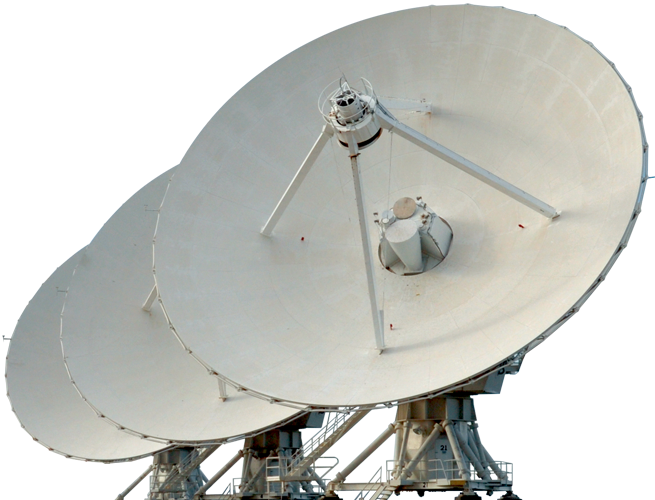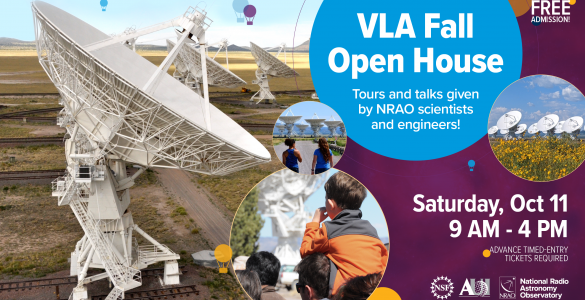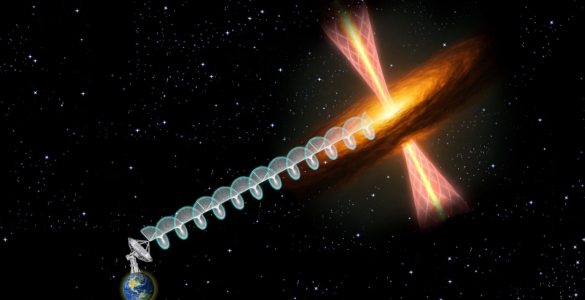What is the VLA?
From the early 1960s at NRAO, astronomers knew they needed an array of radio dishes to complement the work of our giant, single-dish telescopes. An array is a group of several radio antennas observing together creating — in effect — a single telescope many miles across.
As a first step, NRAO built the Green Bank Interferometer to learn and develop best communications, correlation, and atmospheric correction practices. Throughout the 1960s and 1970s, this four-element array helped NRAO prepare for a Very Large Array of 27 telescopes.
VLA Construction Timeline
1972 August – VLA approved by Congress
1973 April – Construction begins on VLA
1975 September 22 – First antenna put in place
1976 February 18 – First interferometric observation
1980 – Formal dedication of the VLA
Location
The first consideration before building any radio telescope is its location. Cosmic radio waves are billions of a billion times fainter than radio waves used to broadcast information on Earth. Radio telescopes must be placed where they can collect these faint cosmic radio waves without any radio interference from humans or nature.
The Plains of San Agustin in New Mexico, northwest of Socorro, is a flat stretch of desert far from major cities. The Plains are ringed by mountains, which act like a natural fortress of rock that keeps out much of the radio interference from cities even hundreds of miles away.
The desert climate of the San Agustin Plain is critical to the success of the VLA. Humidity is a real problem in radio astronomy, because water molecules distort the radio waves passing through them and also give off their own radio waves that interfere with observations at certain frequencies. Radio telescopes that collect radio waves in the same frequencies as water’s radio waves need to be in deserts to reduce this background signal from Earth-based water molecules.
Design
Each of the VLA’s 28 antennas (including the one that is a spare) is an 82-foot dish with 8 receivers tucked inside. The dish moves on an altitude-azimuth mount, what you’ve probably seen as a classic tripod mount: it tilts up and down and spins around.
The iconic “Y” shape of the VLA is not for looks, it’s for function. The wider an array is, the bigger its eye is, and the more detail it can see out in space. The VLA’s unique shape gives us three nice long arms of nine telescopes each. It also gives us the flexibility of stretching the arms when we need to zoom in for more detail.
We put our telescopes on rails. Three times a year, a specially-designed rail truck, called a TransporterTransporterThe two VLA transporters are special-purpose vehicles designed specifically to pick up and carry the VLA's 230-ton dish antennas. The transporters run on two parallel sets of U.S. gauge railroad tracks -- four rails in total. Weighing 90 tons themselves, the transporters are powered by 380- and 400-horsepower (respectively) diesel engines that in turn power a hydraulic system. That system drives the wheels using radial hydraulic motors and also powers the jacks that lift the antennas off their concrete-pier mountings. The wheels are mounted on assemblies at each corner of the vehicle that can rotate to allow "turning" the 90-degree rail intersections that connect each antenna mounting station with the main rail line for each arm of the VLA's "Y" layout., picks up telescopes and hauls them one at a time farther down their track. Over the course of 16 months, the VLA lengthens each of its legs from two-thirds of a mile to 23 miles long.
Interested in what configuration the VLA is in today?
Visit the most productive radio telescope in the world!
Whether you’re planning a trip to New Mexico and want to get a preview or just want to know more about this remote set of radio dishes, we have two options to introduce you to this unique scientific tool that we’re using to reveal the invisible universe.









